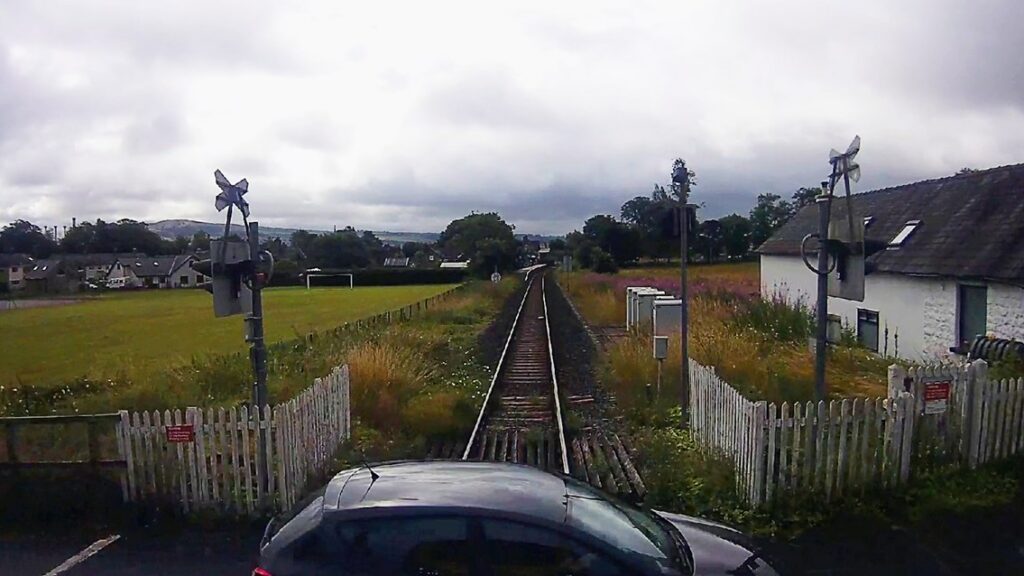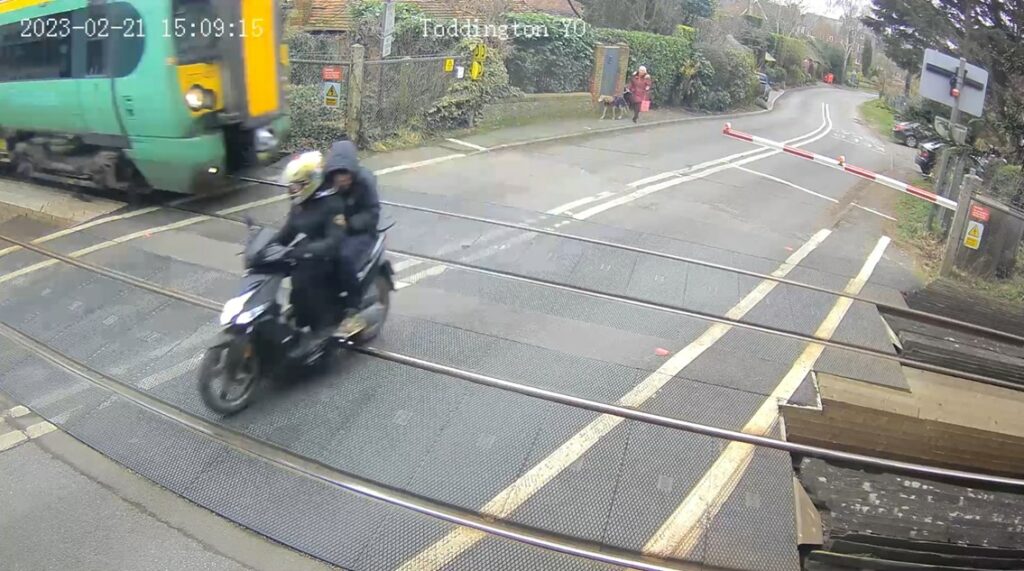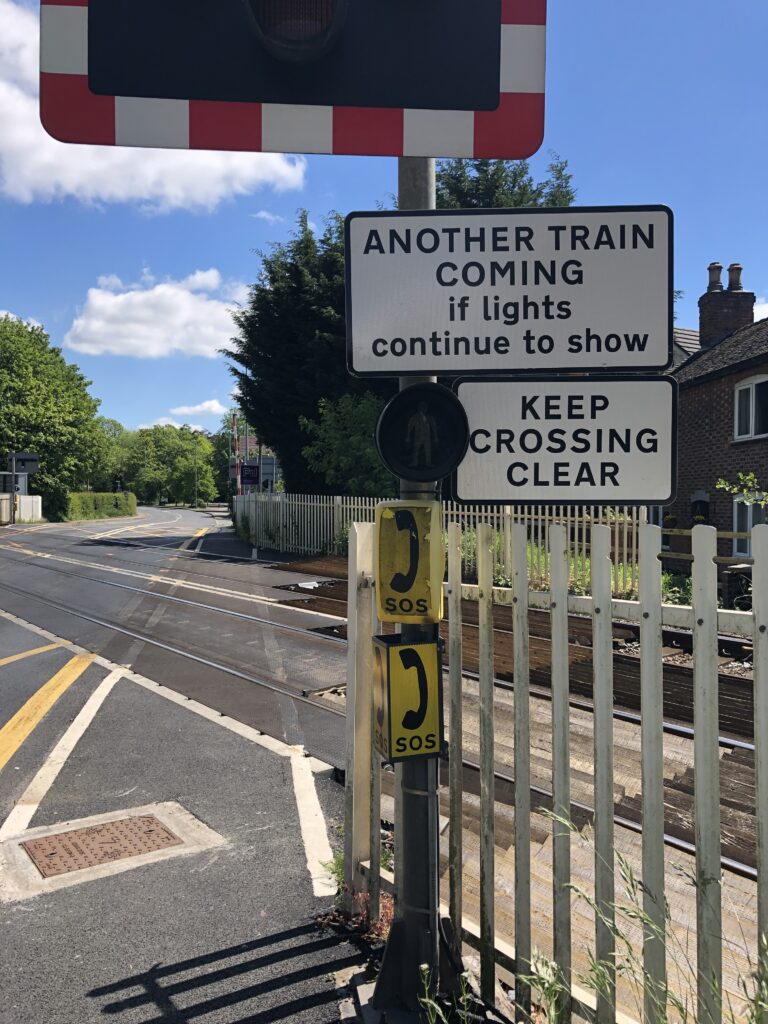Great Britain’s railway level crossings are among the safest in Europe and operate on a network which is one of the most intensively used in the world. However, they still pose a significant safety risk to the public, and trains can be delayed if there is a fault or incident. Level crossings were provided when the railway was built in Victorian times and, if a railway was built today, it wouldn’t include them. The safest level crossing is a closed one, but that is not easy as they connect communities. Rural crossings in particular are increasingly being used for leisure purposes, and there are more deliveries to homes and business than ever.
Covid-19 has changed society. Since the start of the pandemic, people tend to exercise outdoors more often and interest in nature has increased. In July 2020, 46% of people responding to a survey by Natural England said they were spending more time outside than before the pandemic. Visits to the RSPB website have also increased by 69% year-on-year, with 79% of users being new to the website.
The days of the same postal delivery person using a level crossing to access an address are long gone. Shopping habits have changed with people spending more time at home and shopping online. In addition to Royal Mail, there are now a huge number of delivery companies all competing against each other, and time, to meet customer expectations. In rural areas, tractors using crossings are more powerful and faster, and the drivers are located in insulated cabs.
Since 2009, Network Rail has invested over £200 million to close crossings, build bridges, provide new barriers, new warning systems, and new signage. It has also worked to identify new safer rights of way and to educate people how to use level crossings more safely. Over 100 level crossing managers have been recruited and trained to gain a greater understanding of level crossings, the people who use them, and the surrounding communities.

Near misses and fatalities
The improvements have helped to reduce risk, but there are far too many near misses and sadly there are still fatalities on level crossings. The challenges to improving level crossing safety include the fact that there are more road journeys than ever, a growing population, increasing public demand for leisure train travel, with more services likely to be introduced, and more people using level crossings for leisure purposes. Network Rail says it is seeing a similar number of level crossing incidents, despite having fewer level crossings than five years ago. This means there are more incidents per crossing.
When reducing risk at level crossings, the first option is always to consider if the crossing can be eliminated. Replacing crossings with a bridge, diverting the rights of way, or extinguishing the rights away entirely, has enabled Network Rail to close over 1,100 level crossings, but these have been ‘the low hanging fruit’ and closing crossings is becoming more difficult. A grade separated railway is expensive, but Britain is a crowded island and, even if funds and resources were available, in many cases it is not easy to provide grade separation.
There are still over 5,500 level crossings on the network, with the majority being footpath and User Worked Crossings (UWC). UWC’s are those where the user has to operate the gates or barriers for themselves when they want to cross the railway. They may also provide access to private land or property that’s effectively landlocked by the railway.
A passive level crossing is one where the user is required to decide whether or not it is safe to cross. Currently, 70% of all level crossings on the GB network are passive crossings, where users have to look and listen for an approaching train or call the signaller by telephone for permission to cross. This method increases the workload of the signaller, requires the user to contact the signaller, and between them they must correctly confirm that the crossing will be clear in order to allow the user to cross safely. So, telephone crossings are not ideal.
The remaining 30% of level crossings are provided with varying types of warning systems to inform crossing users when it is unsafe to cross. These are known as active level crossings.
In terms of risk reduction, since 2009, level crossing risk, expressed in terms of Fatalities and Weighted Injuries (FWI), has reduced by around 37% and is currently sitting at around 11 FWI per year. Compared to other European railways, either on the basis of track incidents per track kilometre or by train kilometre, Network Rail has the second lowest number of crossing incidents after Ireland.
However, level crossings still represent around 6% of the system risk on the GB mainline railway. In the reporting year April 2022 to March 2023, there were five fatalities at level crossings, all of which were footpath crossings, demonstrating why the focus on reducing risk at these types of level crossings is particularly important. In addition, near misses at pedestrian level crossings is a continuing trend which is not reducing. So, more has to be done.
Lady Howard crossing
On Thursday 21 April 2022, a pedestrian was struck and fatally injured by a train at Lady Howard footpath crossing in Surrey. The pedestrian, with a dog and pushing a wheeled trolley bag, started to cross after a train had passed, but was struck by a second train travelling in the opposite direction to the first.

The investigation by RAIB found that the pedestrian did look twice in the direction of the second train before starting to cross but was unaware that the second train was approaching when the decision to cross was made. This was because the front of this second train was hidden behind the first train, which was moving away on the line nearest.
RAIB reported that Network Rail had not provided any effective additional risk mitigation, having previously deemed the risk to users to be unacceptable. Network Rail had planned and budgeted to install integrated Miniature Stop Lights (MSL) at the crossing, but a shortage of resource meant that the delivery was delayed. Network Rail had fitted additional warning signs for users and a camera to monitor crossing use, but RAIB said there was little evidence that other effective options to mitigate the risk on an interim basis had been considered.
The fatality at Lady Howard footpath occurred on 21 April 2022 and RAIB issued its final report in February 2023. However, as new evidence came to light, RAIB re-opened its investigation in August 2023 and published a revised final report in February 2024.
MSLs were commissioned at Lady Howard crossing in January 2024.
MSLs consist of red and green lights. The green light is lit the majority of the time and indicates that no trains are approaching. When a train reaches the ‘strike in’ point the light automatically changes to red, and an audible alarm sounds to indicate that users must not cross and the closure sequence commences. It is set at a distance calculated to allow users a safe amount of time to cross when trains are travelling at the maximum speed permitted on the line. The audible alarm also includes a spoken warning which is triggered if another train is approaching the crossing soon after the first one has passed. This message states “Warning – another train may be approaching”.
Could safety be improved quicker?
The need to install safety improvements does not need to be questioned. Rail Engineer first reported on the Schweizer Electronics MSL eight years ago in June 2016. Schweizer said at the time that its experience in Switzerland was to receive an order on a Thursday, complete the design on the Friday, and install at the weekend. However, it took years to get the product approved for use in GB and Rail Engineer is doubtful if an MSL could be installed in four days here. MSL systems are now being regularly installed and yes, technology needs to be assessed and trialled robustly, and MSL’s interfaced to the signalling system will need design and testing; but could the delivery of safety technology be improved?
In 2015 RSSB reported on the need for a review of signing requirements at private road level crossings to determine the types of signs, signals, and markings that would be most effective in reducing road user errors and violations at these crossings. Rail Engineer reported on the welcome proposals in the article ‘Making user worked crossings safer’ in issue 177 (August 2019), but the new signs have taken years to reach agreement and only passed into legislation with the Private Crossing Signs and Barriers regulations, 2023, eight years after the RSSB report. The legislation currently only covers signs in the English language and work is ongoing with the Department of Transport to develop Welsh language signs. So how long will this take?

The development of the signage has been very much a collaboration between level crossing risk management professionals, human factors experts, and engineers. The signs are heavily pictogram based, to mitigate users potentially not having a detailed understanding of English. Over the next few years, Network Rail will be installing the new signs at all private crossings and public footpath level crossings in England and Scotland.
The legislation focuses on defining what the signs look like but doesn’t cover how to use them. So, Network Rail has produced Module A 28a to the Level Crossing Design Handbook, to set out the application and positioning rules for the signs. This was published in March with a compliance date from April.
Inspection and maintenance
Level crossings are inspected by a level crossing manager at a frequency based on the level of risk of a crossing. The only consistent factor of a crossing is that everything will be constantly changing! It is therefore important that a check is made for any defects or changes that may pose a risk to users, trains, or vehicles passing over the crossing.
For example, where a passive crossing requires a sighting distance, this can quickly be compromised by vegetation growth, requiring an intervention or even a temporary speed restriction. Network Rail cannot always quickly fell offending trees and may require a site-specific licence. Nothing is easy with level crossings. Even a speed restriction may not be the best way to reduce risk as a longer waiting time may encourage a user to cross in front of a slow-moving train. But even a slow-moving train can’t stop quickly, and users can stumble and lose their balance on a crossing.
The Network Rail maintenance teams undertake a programme of planned maintenance activities, and on some level crossings remote monitoring systems check asset health and performance, to enable timely interventions to tackle emerging defects.
Renewals
When level crossing equipment has reached the end of its life cycle, the asset will be renewed. Given the high cost of level crossings and their long service life, it is vital to select the safest crossing equipment most suitable for the site-specific risks. Very often, over the life of a crossing both the railway and the surrounding area, and the risks, may change significantly, and a comprehensive, suitable, and sufficient risk assessment must be produced to identify the right solution.
Automatic Half Barrier Crossings (AHB) were introduced many years ago and, when used properly, are safe and efficient, as the ‘road closed’ time is less than other types of crossing. An AHB is initiated automatically by an approaching train and there is no monitoring to check if the crossing is clear before a train is allowed to cross. As the name suggests, AHBs do not have full barriers, so people can easily ‘weave’ around the closed barriers. AHBs account for just 6% of the total crossing estate but hold 32% of the total level crossing modelled risk, therefore no new AHBs are being installed and measures to mitigate against weaving are being looked into.
Health and safety strategy
Leading Health and Safety on Britain’s Railway (LHSBR) is the rail industry’s health and safety strategy. Developed by leaders across a range of rail sectors, this strategy sets out the challenges and activities which need collaborative approaches to deliver a better, safer, and healthier railway across Great Britain. The strategy identifies 12 key risk areas where safety and health performance needs to be improved, of which level crossings are one of them.

This requires the industry to research and develop emerging technologies leading to cost effective level crossing upgrades, and to collaborate to deliver consistent messages to the public in relation to level crossings.
In response to LHSBR, Network Rail has produced the report ‘Enhancing Level Crossing Safety 2019 to 29’, which sets out the overarching strategy to manage and reduce level crossings risk, enable effective collaborations, and the delivery of targeted improvements. The document also sets out Network Rail’s goals to reduce safety risk, increase rail capacity and performance, and reduce operational and financial risk. The four key areas are, risk management, technology and innovation, competence management, and education and enforcement.
Society is changing and there is an increasingly diverse population, with potentially more vulnerable people using level crossings. Public attitudes and expectations are changing, and people expect that risks will be designed out of level crossing systems. The public expectation of what is safe enough can also change quickly when things start to go wrong.
New crossing technology can help improve level crossing safety, but level crossing safety cannot be improved by technology alone. Everyone, including government, the rail industry and its supply chain, and wider society, must work together to improve level crossing safety.
Lead image credit: Network Rail

